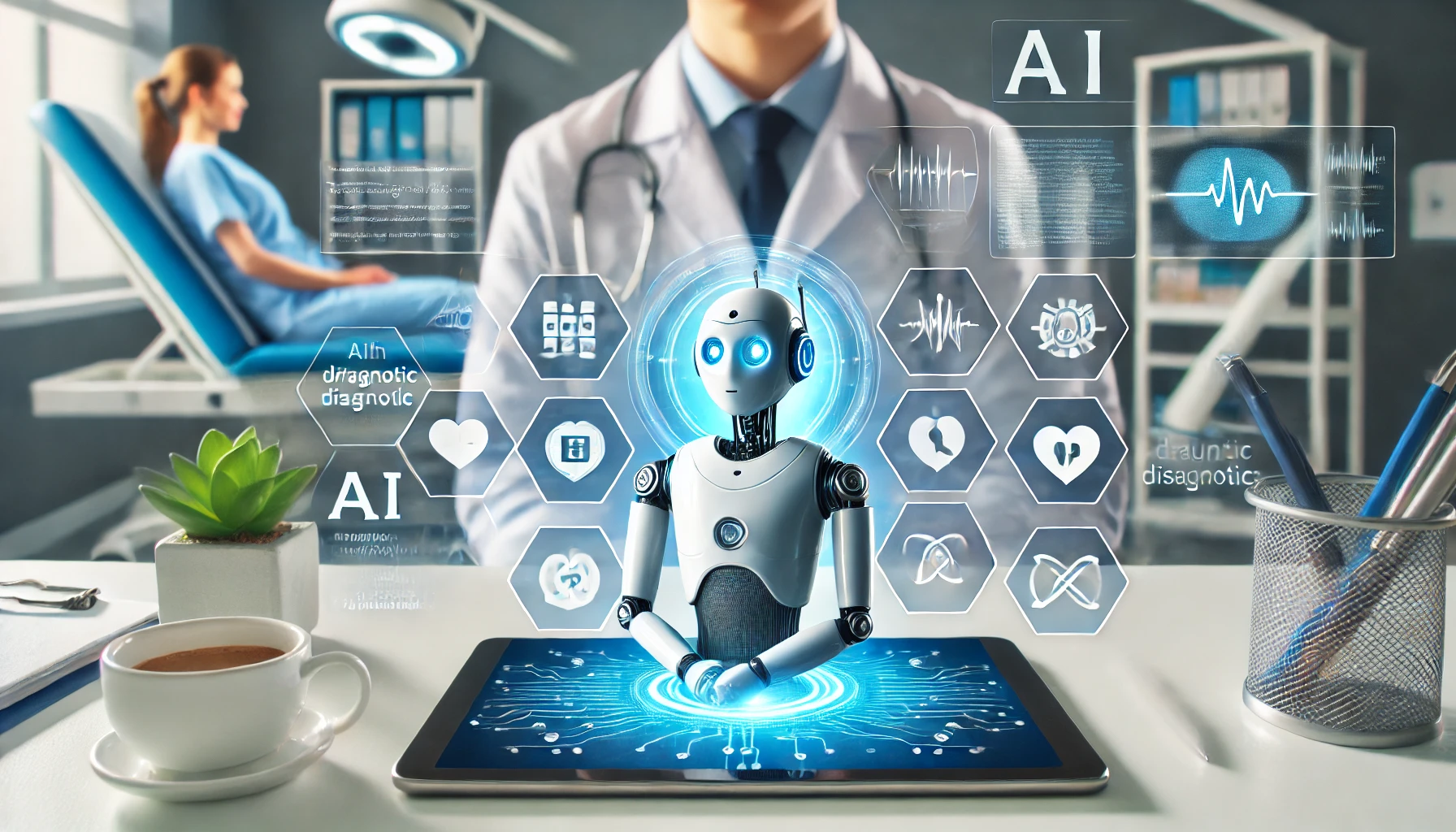Healthcare inequity is one of the most persistent challenges across the globe, and in many ways, the healthcare system still falls short of providing quality care to underserved populations. Barriers such as geographical location, economic constraints, and a shortage of medical professionals in remote areas often make accessing healthcare difficult for millions. Artificial Intelligence (AI) has the potential to change this. By leveraging AI-driven tools and technologies, healthcare providers can bridge significant gaps in accessibility and make healthcare more inclusive and equitable.
The Scope of Healthcare Accessibility Issues
According to the World Health Organization (WHO), over half of the world’s population does not have full coverage of essential healthcare services, and nearly 100 million people are pushed into extreme poverty because of health expenses each year. In the U.S., the Department of Health and Human Services reports that rural communities face a 40% higher risk of preventable hospitalizations compared to their urban counterparts, largely due to a lack of access to timely medical care.
Low-income communities, minorities, and those living in remote locations are among the hardest hit, often lacking basic healthcare infrastructure. Moreover, language barriers, health literacy, and cultural factors add to the complexity. These issues highlight the need for transformative solutions to make healthcare more accessible, affordable, and efficient.
Artificial Intelligence (AI) is uniquely positioned to address these gaps. By automating routine tasks, enhancing diagnostic accuracy, and enabling remote care, AI offers solutions that can reach even the most underserved populations.
1. AI-Powered Telemedicine and Virtual Care
Telemedicine has long been hailed as a critical tool for bridging the healthcare gap, especially in rural and underserved areas. AI-driven telemedicine platforms take this a step further by providing more intelligent, personalized care remotely. Virtual health assistants, such as chatbots and voice-recognition systems, can handle routine inquiries, schedule appointments, and even conduct preliminary diagnoses through symptom checkers.
For example, Babylon Health, a UK-based health service provider, uses AI to provide medical consultations to people via mobile apps. The AI-driven platform allows patients to input symptoms, and based on machine learning algorithms, it offers diagnoses and suggests the appropriate course of action. With services available in regions with a shortage of healthcare providers, Babylon Health represents a step toward equalizing access to healthcare.
2. Remote Diagnostics and Monitoring
AI plays a pivotal role in remote diagnostics, particularly for chronic diseases and conditions that require regular monitoring. Remote patient monitoring systems, powered by AI, enable doctors to track vital signs and other health indicators without the patient needing to visit a clinic. This is particularly useful for populations in remote areas where traveling to a healthcare facility may not be feasible.
In India, a country where healthcare resources are scarce in rural regions, a company named Niramai has developed an AI-based solution for breast cancer screening. Using thermal imaging and AI algorithms, the system can detect early signs of breast cancer without the need for traditional mammography, which is often inaccessible to women in rural areas. This innovative approach not only improves access to screening but also lowers costs, making it an ideal solution for underserved communities.
3. AI-Assisted Mobile Health (mHealth) Applications
Mobile health applications driven by AI are increasingly used to extend healthcare to underserved areas. These apps can offer everything from medication reminders and fitness tracking to personalized health education and guidance.
In Africa, where healthcare infrastructure is often underdeveloped, mPharma—a Ghana-based startup—has used AI to monitor drug inventory and ensure that medicines are available in rural pharmacies. This type of logistical support can prevent medication shortages and improve healthcare outcomes in regions where people may otherwise be forced to go without essential treatments.
Moreover, AI-driven health apps like Ada Health and Symptomate offer symptom-checking capabilities, enabling users to input their symptoms and receive real-time medical advice. This empowers individuals in underserved communities to make informed decisions about when to seek medical attention, especially in regions where healthcare providers are scarce.
4. AI-Powered Language Translation and Accessibility Tools
One of the lesser-known applications of AI in healthcare is in overcoming language barriers. In regions where patients may not speak the dominant language or have low health literacy, AI-powered translation tools can be a game-changer. AI can assist healthcare providers in communicating with patients in their native language, providing crucial information in a way that patients can understand.
For instance, Google Health is exploring AI-driven language translation tools that can be integrated into healthcare systems to break down communication barriers between doctors and patients. In a healthcare setting where a provider and patient do not speak the same language, these AI-powered translation services can help ensure that the patient receives accurate and understandable information about their health.
5. AI for Predictive Healthcare and Preventative Measures
One of the most exciting prospects for AI is its ability to predict healthcare trends and implement preventative care strategies. AI can analyze data from a variety of sources—ranging from electronic health records (EHRs) to social determinants of health—and predict which individuals or populations are at risk for specific conditions.
For example, in Kenya, AI-driven algorithms are being used to predict outbreaks of diseases like malaria. Using a combination of satellite imagery, weather data, and historical data, AI can anticipate when and where malaria outbreaks are likely to occur, enabling public health officials to deploy resources in a timely and targeted manner. This kind of preventative care model, powered by AI, can significantly improve outcomes in underserved regions where healthcare resources are limited.
Challenges and Ethical Considerations
While AI holds immense promise for improving healthcare accessibility, it is not without challenges. For AI to be truly transformative in underserved communities, these challenges must be addressed.
1. Data Privacy and Security
AI requires vast amounts of data to function effectively, and this raises concerns about patient privacy and data security. In regions where regulations may not be as stringent, there is a risk that patient data could be misused or inadequately protected. Ensuring robust data privacy policies and transparent practices are essential to building trust in AI-driven healthcare solutions.
2. Bias and Inequality in AI Algorithms
AI systems are only as good as the data they are trained on. If the data reflects existing biases—such as racial, gender, or socioeconomic inequalities—the AI algorithms may inadvertently perpetuate those biases. This could lead to underserved populations receiving suboptimal care. For example, there have been concerns about racial biases in AI systems used to predict healthcare needs, as some datasets may not adequately represent minorities.
3. Infrastructure and Technological Barriers
In many underserved regions, basic infrastructure, such as reliable internet access, is lacking. AI-driven telemedicine or mobile health apps will only be effective if the necessary technological infrastructure is in place. Governments and private companies will need to invest in this infrastructure to make AI a viable solution in these areas.
4. Ethical Use of AI in Decision-Making
AI-driven decision-making tools are incredibly powerful, but they must be used ethically. For example, AI algorithms used to decide who gets priority in receiving care or treatments must be transparent and fair. There is a risk that these tools could prioritize profitability over patient needs, which would widen the gap in healthcare access instead of closing it.
Artificial Intelligence offers a promising path toward bridging gaps in healthcare accessibility for underserved communities. From AI-powered telemedicine to remote diagnostics and language translation, these technologies are already making a difference in some of the world’s most vulnerable populations. However, challenges such as data privacy, bias, and infrastructure limitations must be addressed to ensure that AI fulfills its potential as an equitable healthcare tool.
By focusing on ethical AI development and ensuring that solutions are designed with the unique needs of underserved communities in mind, the healthcare industry can take significant steps toward making quality healthcare a reality for all.
AI’s ability to improve accessibility will depend not just on technological advancements but also on a collective effort to build inclusive systems that benefit everyone, especially those who need it most.
Sources:
- World Health Organization. (2021). Universal Health Coverage and Financial Protection.
- Department of Health and Human Services. (2022). Rural Healthcare Disparities in the U.S.
- Babylon Health. AI-Powered Telemedicine Platform.
- Niramai. AI-Based Breast Cancer Screening.
- mPharma. AI for Medication Access in Africa.
- Google Health. AI-Driven Language Translation Tools for Healthcare.




